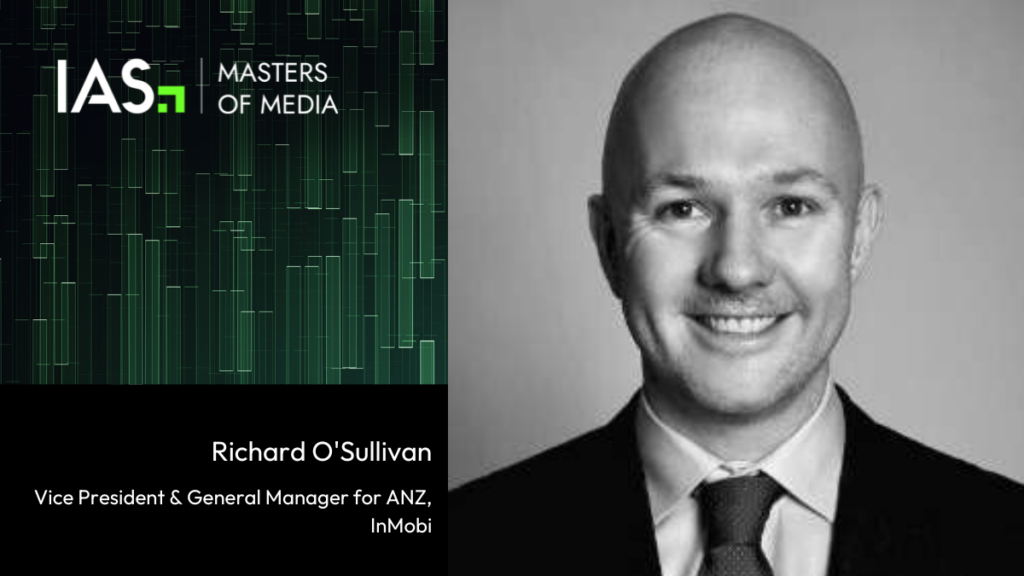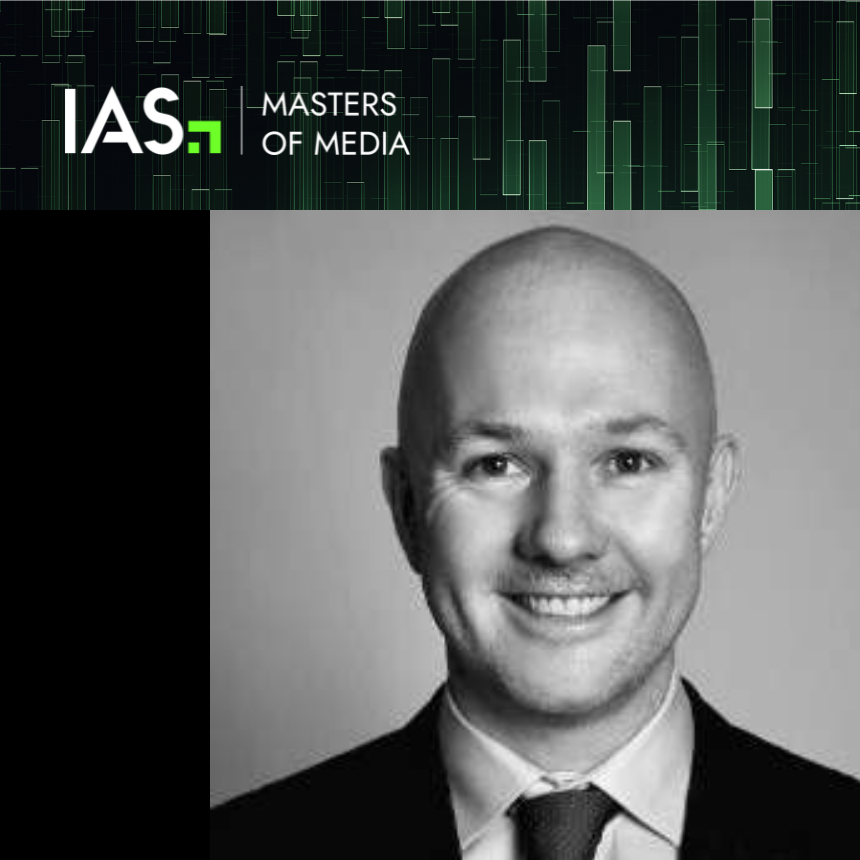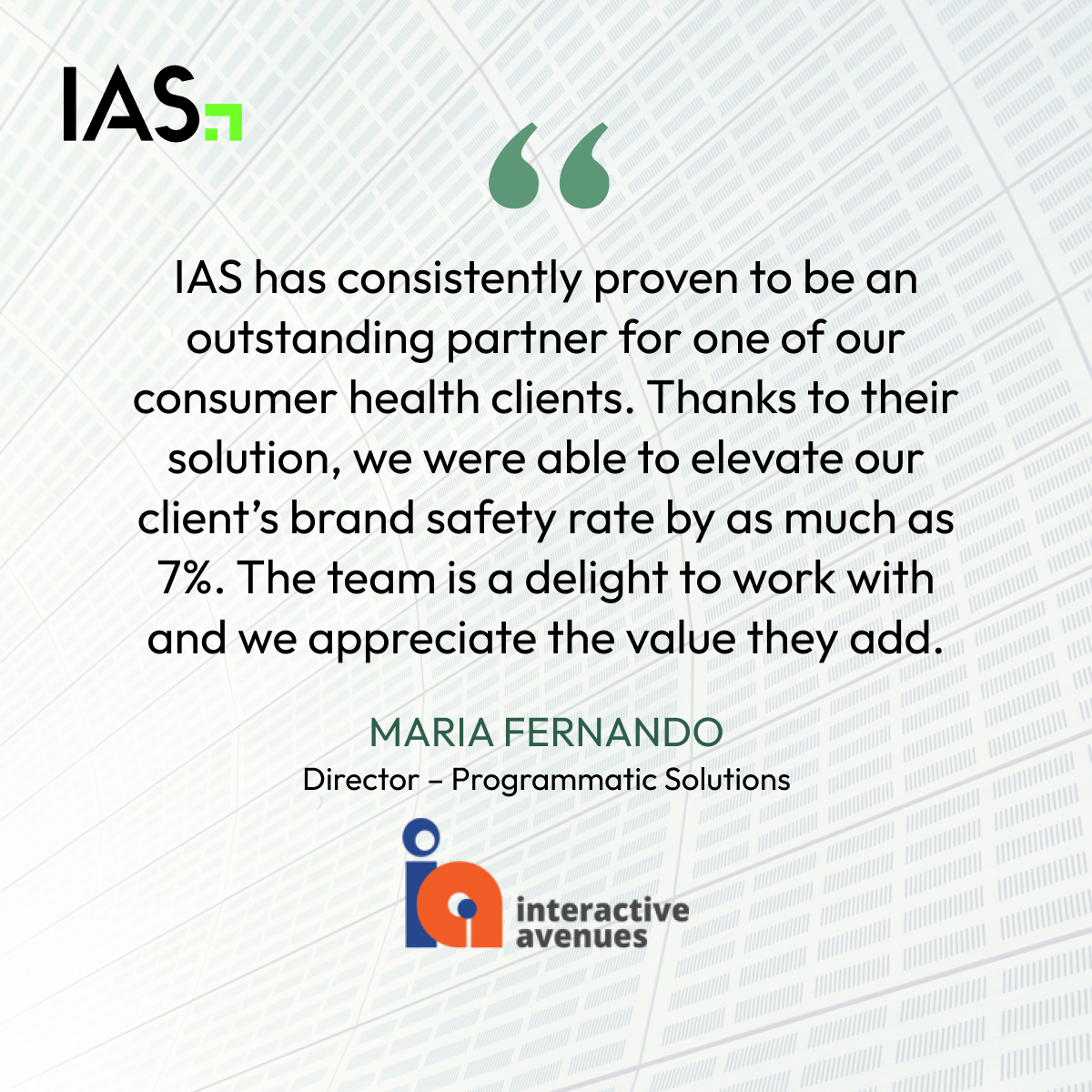
In this exclusive “Masters of Media” series, Integral Ad Science (IAS) speaks to the Movers and Shakers of the APAC advertising industry, on all matters digital.
Richard O’Sullivan is the Vice President & General Manager for Australia & New Zealand at InMobi. He brings a global perspective with over 20 years of experience in the marketing & advertising industry, having worked for technology & media companies across London, Dubai, Singapore, New York, Sydney & Melbourne. His earlier stints include leading EMEA, Asia & North America for InMobi in as well as setting up his own company, Protean Consulting in the capacity of Advisor, Mentor & Consultant & focused on market entry, turnarounds and non-linear revenue growth opportunities for companies.
IAS: Please tell us about your digital advertising journey and your current role.
Richard: I initially entered the media industry back in 2001 with IPC Media (now TI Media) before joining and spending some time with National Press with the Daily Mirror & Mail on Sunday, working across various disciplines from BD, Sales, Creative Solutions, and Strategy. After 8-years in the London media scene, my digital advertising journey began when I relocated to Dubai, UAE, to build the digital advertising division of ArabianBusiness.com, a start-up of sorts.
I had a taste for digital advertising then, what with the agility to transform ideas into tangible outcomes with minor obstacles. I introduced high-impact creative ad units on desktop at USD 120 CPM after getting a friend of a friend to build the code and paid just $750 for the IP. We invented, innovated, and made an impact on the local market, and I hope to think… left a legacy. The next role would be Abu Dhabi Media Company (ADMC) which was the commercial arm of the Abu Dhabi Government, sovereign funded, cash-rich and hungry for unprecedented growth.
My energy and excitement in the digital advertising space was fuelled being part of the team and leading commercialisation of a national newspaper & it’s digital persona (TheNational.ae), working with a fantastic team to conceive of the digital version of Zahrat Al Khaleej, a market-leading female, Arab fashion magazine (anaZahra.com since evolved into this) and commercialising/ launching the English Premier League into the Middle East.
All of this at a time when we were one of the few companies that charged clients a CPM based on ads rendered as opposed to ads served and when IAS was not in existence. However, with the cultural sensitivities of the region, we did try our utmost to ensure that brand safety was sacrosanct.
I then moved to set up InMobi in the middle east and my digital advertising journey refocused on mobile. My journey accelerated, with six and a half years at the company running EMEA, Asia, North America and now Oceania, based in Dubai, Singapore, New York & Melbourne and travelling everywhere in between from crossing Taksim Square for client meetings during the Turkish uprising, the surrealness of getting a London black cab in Riyadh to paying 10x Uber surge pricing at CES in Vegas.
IAS: How has COVID-19 impacted consumer behaviours and the digital advertising industry at large?
Richard: The spread of COVID-19 has caused massive disruption to the lives of billions of people across the globe. As people and companies shifted to adapt to deal with this growing/ ongoing crisis, the spending habits of consumers and their media consumption witnessed substantial shifts also, most notably in the growth of Gaming, Streaming & eCommerce. Trends which show no sign of slowing and all 3x trends are converging on the mobile device. More details here
IAS: How has media quality been treated on mobile app, separate vs web?
Richard: This is a very interesting area because while the revenue/ ad request volumes in Australia tend to be 60:40 in favour of mobile web v mobile app, the latter is substantially less understood. Often when the InMobi Exchange is running campaigns across private marketplaces (PMPs), we see media buyers apply filters and parameters that should only be applied to mobile web campaigns. Top examples of web parameters applied against app campaigns include: Keywords Targeting, Cookie Based Audience Targeting (+ other contextual), Pre-Bid Viewability etc.
This creates bottlenecks on delivery of the campaign because the device is the same, the environment is very different and needs different skills to ensure maximum impact. For PMPs, we do consult and solve for with our partners. But if this action is the same across the open exchange, it can slip through the cracks with the potential bad experience misappropriated to the in-app environment as opposed to implementation of campaigns.
IAS: Video has seen a bigger focus with the evolution of mobile technology and support of 5G, what does this mean for the advertisers?
Richard: The growth of ‘video’ has become device agnostic with the ability to walk between rooms + devices and simply pick up watching & consuming content with minimal friction. With the realisation of the potential of 5G and the emotive impact of the audio visual imagery on potential customers it’s going to accelerate the growth of streaming across all devices, all locations and the mobile device will be a critical device in that eco-system, further defining it as the remote control for people lives.
For advertisers, it can mean 3 big things:
- Enhanced Consumer Engagement: 5G takes the idea of connectivity to a whole new level. With the enhanced internet speed, streaming video is set to be astoundingly faster than anything we have seen till date, creating more opportunities to encourage viewers to experience wonderfully creative, high-resolution video ads. The potential for better user experiences will hopefully result in a higher quality of ads with less people clicking away. This will eventually mean higher view-through rates.
- High Scope for Innovation: Video ads which are interactive or playable can land different narratives based on the viewer’s response or preferences during the , From wearable tech to AR and VR, the impact on how we tell stories and interact with technology is set to be huge. This means driving personalized video advertising at scale based on consumers’ individual preferences and needs, in turn helping brands break through the clutter. This mean faster experimentation with advanced technology and better creative for every video campaign.
- Full-funnel marketing with Video: Soon, video will be leveraged by advertisers to not just drive reach or awareness, but also driving consideration and ultimately purchase or transactions. We have seen a bunch of gaming apps already leverage this for driving app installs but this should also now become a norm for the non-gaming advertisers out there.
IAS: How’s InMobi assisting the clients to survive and thrive in a post-IDFA world.
Richard: Along with cookies, GAID & IDFA have been central identifiers allowing for audience segmentation, frequency capping and attribution for a long time. With the evolution of privacy regulations, InMobi has been working on three fronts to help both demand-side and supply-side partners survive and thrive in a post-IDFA world:
- Knowledge and Insights: InMobi Apple’s AppTrackingTransparency (ATT) framework will have a profound effect on in-app advertising in the iOS mobile ecosystem. As a result, it’s critical that advertisers, publishers and everyone in between understand these changes and how to move forward. InMobi has launched an IDFA resource center for providing real-time updates on the adoption rate of iOS 14.5 or higher, the opt-in rates from users, and the progress being made with SKAN. Here are a couple of the insights that are available on the resource center:
as of June 7, 2021
as of June 7, 2021
- Educating Clients: InMobi has been working with various ecosystem partners as part of the post-IDFA alliance to provide them with the right resources via webinars, whitepapers, and guides on how to plan their post-IDFA mobile marketing strategy. We are also partnering with industry bodies such as the Interactive Advertising Bureau to ensure that players across the board bring out this much-needed information on centralised platforms.
- Post-IDFA Solutions: We have recently launched UnifID, an industry-first offering, designed to simplify and streamline identity resolution for mobile app publishers and developers. It is designed to help app publishers make their advertising inventory more addressable and thus more valuable to advertisers. With UnifiD, our app publishers can easily integrate multiple identifiers via the publisher interface, all the while collecting permissioned user data and transferring the corresponding IDs to the upstream demand partners for activating first-party-based media buying. Therefore, instead of mobile ad IDs UnifID allows publishers to select and work with multiple identity players & provide marketers the option to bid on or target users leveraging people-based identifiers in a channel-agnostic way.
IAS: What are the key initiatives pertaining to digital media quality your company is prioritizing currently? E.g. ad fraud, viewability, brand suitability
Richard: The priority of any company should be to the umbrella term of ‘digital media quality’ as all are equally important to media buyers at minimum as table-stakes. Going further than this and being GDPR, CCPA compliant are additional facets of credibility & integrity for any partner since a company has subjected their products to third party scrutiny and the eventual certification has meaning and offers greater transparency & surety to buyers.
InMobi has now been certified with TAG against fraud for 4-years now. We are compliant with GDPR and CCPA and are also fully enabled for OM SDK of which IAS is a key partner. We comply with the IAB Transparency & Consent Framework (TCF): 2.0. Aside from this we’re the only mobile in-app exchange to have 100% pre-bid filtering of all ad requests.
Now with the launch of mobile web inventory onto the InMobi Exchange our priority is taking our rigorous approach to in-app and applying it to the mobile web environment for the benefit of our customers.
IAS: What is your advice to the fresh talent in the industry?
Richard: My feedback would be that the intersection of media, marketing & technology is both fascinating and volatile and not for the faint hearted in the current climate of fast-paced growth (network effects of platforms), game-changing trends (think 5G, Privacy etc.) but this also means opportunities for self-development and career growth. More thoughts I shared recently with the IAB in their Talent Q&A here.
IAS: How do you unwind?
Richard: Haha, I had to google the term…I enjoy what I do and so when you find a role where passion and growth are intertwined it’s hard to slow down, especially where potential is limitless an entrepreneurial flair is encouraged.
 Share on LinkedIn
Share on LinkedIn Share on X
Share on X


